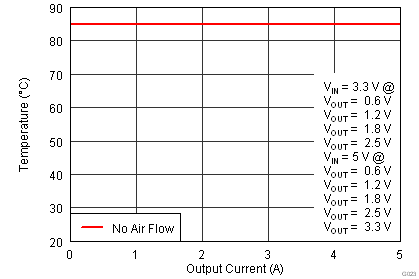ZHCS609A December 2011 – November 2016 TPS53316
PRODUCTION DATA.
- 1 特性
- 2 应用
- 3 说明
- 4 修订历史记录
- 5 Pin Configuration and Functions
- 6 Specifications
- 7 Detailed Description
- 8 Application and Implementation
- 9 Power Supply Recommendations
- 10Layout
- 11器件和文档支持
- 12机械、封装和可订购信息
6 Specifications
6.1 Absolute Maximum Ratings
over operating free-air temperature range (unless otherwise noted)(1)| MIN | MAX | UNIT | |||
|---|---|---|---|---|---|
| Input voltage | VIN | –0.3 | 7 | V | |
| VBST | –0.3 | 17 | |||
| VBST (with respect to LL) | –0.3 | 7 | |||
| EN | –0.3 | 7 | |||
| FB, PS, RF/OC | –0.3 | 3.7 | |||
| Output voltage | SW | DC | –1 | 7 | V |
| Pulse < 20 ns, E = 5 µJ | ≥–5 | <10 | |||
| PGD | –0.3 | 7 | |||
| COMP, VREG3 | –0.3 | 3.7 | |||
| PGND | –0.3 | 0.3 | |||
| Junction temperature, TJ | –40 | 150 | °C | ||
| Operating open-air temperature, TA | –40 | 85 | °C | ||
| Storage temperature, Tstg | –55 | 150 | °C | ||
(1) Stresses beyond those listed under Absolute Maximum Ratings may cause permanent damage to the device. These are stress ratings only, which do not imply functional operation of the device at these or any other conditions beyond those indicated under Recommended Operating Conditions. Exposure to absolute-maximum-rated conditions for extended periods may affect device reliability.
6.2 ESD Ratings
| VALUE | UNIT | |||
|---|---|---|---|---|
| V(ESD) | Electrostatic discharge | Human-body model (HBM), per ANSI/ESDA/JEDEC JS-001(1) | ±2000 | V |
| Charged-device model (CDM), per JEDEC specification JESD22-C101(2) | ±500 | |||
(1) JEDEC document JEP155 states that 500-V HBM allows safe manufacturing with a standard ESD control process.
(2) JEDEC document JEP157 states that 250-V CDM allows safe manufacturing with a standard ESD control process.
6.3 Recommended Operating Conditions
| MIN | MAX | UNIT | |||
|---|---|---|---|---|---|
| Input voltage | VIN (main supply) | 2.9 | 6 | V | |
| VBST | –0.1 | 13.5 | |||
| VBST (with respect to SW) | –0.1 | 6 | |||
| EN, | –0.1 | 6 | |||
| FB, PS, RF/OC | –0.1 | 3.5 | |||
| Output voltage | SW | –1 | 6.5 | V | |
| PGD | –0.1 | 6 | |||
| COMP, VREG3 | –0.1 | 3.5 | |||
| PGND | –0.1 | 0.1 | |||
| TJ | Junction temperature | –40 | 125 | °C | |
6.4 Thermal Information
| THERMAL METRIC(1) | TPS53316 | UNIT | |
|---|---|---|---|
| RGT (QFN) | |||
| 16 PINS | |||
| RθJA | Junction-to-ambient thermal resistance | 45.9 | °C/W |
| RθJC(top) | Junction-to-case (top) thermal resistance | 54.3 | °C/W |
| RθJB | Junction-to-board thermal resistance | 18.3 | °C/W |
| ψJT | Junction-to-top characterization parameter | 1.1 | °C/W |
| ψJB | Junction-to-board characterization parameter | 18.3 | °C/W |
| RθJC(bot) | Junction-to-case (bottom) thermal resistance | 5.3 | °C/W |
(1) For more information about traditional and new thermal metrics, see the Semiconductor and IC Package Thermal Metrics application report.
6.5 Electrical Characteristics
over operating free-air temperature range, VIN = 3.3 V, PGND = GND (unless otherwise noted)| PARAMETER | TEST CONDITIONS | MIN | TYP | MAX | UNIT | |
|---|---|---|---|---|---|---|
| SUPPLY: VOLTAGE, CURRENTS, AND UVLO | ||||||
| VVIN | VIN supply voltage | Nominal input voltage range | 2.9 | 6 | V | |
| IVIN(sdn) | VIN shutdown current | EN = LO | 15 | µA | ||
| IVIN | VIN supply current | EN = HI, VFB = 0.63 V, No load | 2 | 3.5 | mA | |
| VUVLO | VIN UVLO threshold | Ramp up, EN = HI | 2.8 | V | ||
| VUVLO(hys) | VIN UVLO hysteresis | VIN UVLO hysteresis | 120 | mV | ||
| VREG3 | LDO output | VVIN = 5 V, 0 ≤ IDD ≤ 5 mA | 3.135 | 3.3 | 3.465 | V |
| VOLTAGE FEEDBACK LOOP: VREF AND ERROR AMPLIFIER | ||||||
| VVREF | VREF | Internal precision reference voltage | 0.6 | V | ||
| TOLVREF | VREF tolerance | 0°C ≤ TA≤ 85°C | –1% | 1% | ||
| –40°C ≤ TA≤ 85°C | –1.25% | 1.25% | ||||
| UGBW(1) | Unity gain bandwidth | 14 | MHz | |||
| AOL(1) | Open-loop gain | 80 | dB | |||
| IFBINT | FB input leakage current | Sourced from FB pin | 30 | nA | ||
| IEA(max)(1) | Output sinking and sourcing current | CCOMP = 20 pF | 5 | mA | ||
| SR(1) | Slew rate | 5 | V/µs | |||
| OCP: OVERCURRENT AND ZERO CROSSING | ||||||
| IOCPL3A(4) | Overcurrent limit on high-side FET | 4.5-A setting, when IOUT exceeds this threshold for 4 consecutive cycles, VVIN = 3.3 V, VOUT = 1.5 V with 1-µH inductor, fSW = 1.1 MHz, TA= 25°C |
4.05 | 4.5 | 4.95 | A |
| IOCPH3A(4) | One-time overcurrent latch off on the low-side FET | 4.5-A setting, immediate shuts down when sensed current reach this value VVIN = 3.3 V, VOUT = 0.6 V with 1-µH inductor, fSW = 1.1 MHz, TA= 25°C |
4.49 | 5.1 | 5.61 | A |
| IOCPL5A(4) | Overcurrent limit on high-side FET | 6.5-A setting, when IOUT exceeds this threshold for 4 consecutive cycles, VVIN = 3.3 V, VOUT = 1.5 V with 1-µH inductor, fSW = 1.1 MHz, TA= 25°C |
6.1 | 6.8 | 7.5 | A |
| IOCPH5A(4) | One time overcurrent latch off on the low-side FET | 6.5-A setting, immediate shut down when sensed current reaches this value VVIN = 3.3 V, VOUT = 0.6 V with 1-µH inductor, fSW = 1.1 MHz, TA= 25°C |
6.75 | 7.5 | 8.3 | A |
| thiccup | Hiccup time interval | fSW = 1.1 MHz | 14.5 | ms | ||
| VZXOFF(1) | Zero crossing comparator internal offset | PGND – SW, SKIP mode | –4.5 | –3 | –1.5 | mV |
| PROTECTION: OVP, UVP, PGD, AND INTERNAL THERMAL SHUTDOWN | ||||||
| VOVP | Overvoltage protection threshold voltage | Measured at the FB w/r/t VREF | 114% | 117% | 120% | |
| VUVP | Undervoltage protection Threshold voltage | Measured at the FB w/r/t VREF | 80% | 83% | 86% | |
| VPGDL | PGD low threshold | Measured at the FB w/r/t VREF | 80% | 83% | 86% | |
| VPGDU | PGD upper threshold | Measured at the FB w/r/t VREF | 114% | 117% | 120% | |
| VINMINPG | Minimum input voltage for valid PGD at start-up | Measured at VIN with 1-mA sink current on PGD pin at start-up | 1 | V | ||
| THSD(1) | Thermal shutdown | 130 | 140 | 150 | °C | |
| THSDHYS(1) | Thermal shutdown hysteresis | Controller start again after temperature has dropped | 40 | °C | ||
| LOGIC PINS: I/O VOLTAGE AND CURRENT | ||||||
| VPGPD | PGD pull-down voltage | Pulldown voltage with 4-mA sink current | 0.1 | 0.3 | V | |
| IPGLK | PGD leakage current | Hi-Z leakage current, Apply 3.3 V in off state | –2 | 0 | 2 | µA |
| RENPU | Enable pullup resistor | 2.25 | MΩ | |||
| VENH | EN logic high | VVIN = 3.3 V | 0.82 | 0.97 | 1.1 | V |
| VVIN = 5 V | 0.95 | 1.1 | 1.25 | V | ||
| VENHYS | EN hysteresis | VVIN = 3.3 V | 0.16 | 0.24 | V | |
| VVIN = 5 V | 0.2 | 0.275 | V | |||
| PSTHS | PS mode threshold voltage | Level 1 to level 2(2) | 0.12 | V | ||
| Level 2 to level 3 | 0.4 | |||||
| Level 3 to level 4 | 0.8 | |||||
| Level 4 to level 5 | 1.4 | |||||
| Level 5 to level 6 | 2.2 | |||||
| IPS | PS source | 10-µA pull-up current when enabled | 8 | 10 | 12 | µA |
| RF/OCTHS | RF/OC pin threshold voltage | Level 1 to level 2(3) | 0.12 | V | ||
| Level 2 to level 3 | 0.4 | |||||
| Level 3 to level 4 | 0.8 | |||||
| Level 4 to level 5 | 1.4 | |||||
| Level 5 to level 6 | 2.2 | |||||
| IRF/OC | RF/OC source current | 10-µA pullup current when enabled | 8 | 10 | 12 | µA |
| BOOT STRAP: VOLTAGE AND LEAKAGE CURRENT | ||||||
| IVBSTLK | VBST leakage current | VVIN = 3.3 V, VVBST = 6.6 V, TA = 25°C | 1 | µA | ||
| TIMERS: SS, FREQUENCY, RAMP, ON-TIME AND I/O TIMING | ||||||
| tSS_1 | Delay after EN Asserting | EN = ‘HI’ | 0.2 | ms | ||
| tSS_2 | Soft-start ramp_up time | 0 V ≤ VSS ≤ 0.6 V | 0.4 | ms | ||
| 0 V ≤ VSS ≤ 0.6 V, 4 x SS time (option2) | 1.6 | |||||
| tPGDENDLY | PGD start-up delay time | VSS = 0.6 V to PGD (SSOK) going high | 0.3 | ms | ||
| VSS = 0.6 V to PGD (SSOK), option 2 | 1.2 | |||||
| tOVPDLY | OVP delay time | Time from FB out of +20% of VREF to OVP fault | 1 | 1.7 | 2.5 | µs |
| tUVPDLY | UVP delay time | Time from FB out of –20% of VREF to UVP fault | 10 | µs | ||
| fSW | Switching frequency | All modes, fSET = 0.75 MHz | 0.653 | 0.725 | 0.798 | MHz |
| All modes, fSET = 1.1 MHz | 0.99 | 1.1 | 1.21 | |||
| FCCM and DE mode, fSET = 2 MHz | 1.71 | 1.9 | 2.09 | |||
| HEF mode, fSET = 2 MHz | 1.566 | 1.8 | 2.034 | MHz | ||
| Ramp amplitude(1) | 2.9 V ≤ VVIN ≤ 6 V | VVIN/4 | V | |||
| tMIN(off) | Minimum OFF time, FCCM and DE | All frequencies | 90 | 130 | ns | |
| Minimum OFF time, HEF | fSW = 1.1 MHz | 160 | 240 | ns | ||
| DMAX | Maximum duty cycle, FCCM and DE | fSW = 1.1 MHz | 84% | 89% | ||
| DMAX | Maximum duty cycle, HEF | All frequencies | 75% | 81% | ||
| RSFTSTP | Soft-discharge transistor resistance | EN = LO, VVIN = 3.3 V, VOUT = 0.5 V | 60 | Ω | ||
(1) Ensured by design. Not production tested.
(2) See PS pin description for levels.
(3) See RF/OC pin description for levels.
6.6 Typical Characteristics
Inductor used: PCMC065T-1R0, 1 µH, 5.6 mΩ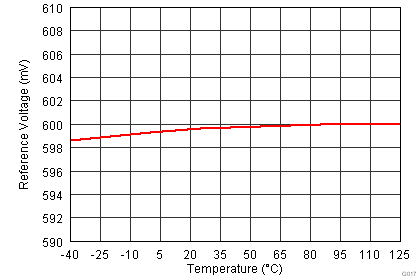 Figure 1. Reference Voltage vs Temperature
Figure 1. Reference Voltage vs Temperature
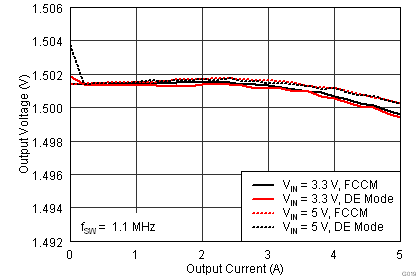 Figure 3. Output Voltage vs Output Current
Figure 3. Output Voltage vs Output Current
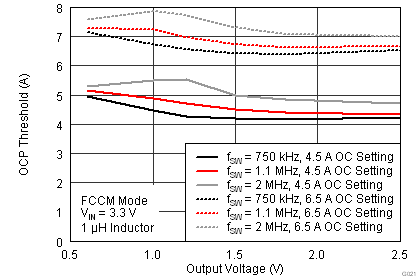 Figure 5. OCP Threshold vs Output Voltage
Figure 5. OCP Threshold vs Output Voltage
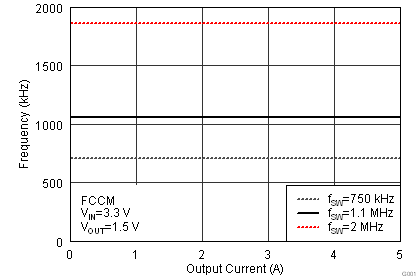 Figure 7. Frequency vs Output Current, FCCM
Figure 7. Frequency vs Output Current, FCCM
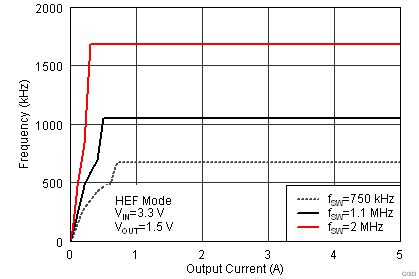 Figure 9. Frequency vs Output Current, HEF Mode
Figure 9. Frequency vs Output Current, HEF Mode
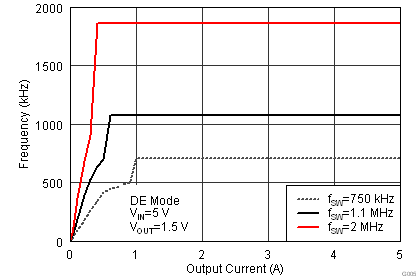 Figure 11. Frequency vs Output Current, DE Mode
Figure 11. Frequency vs Output Current, DE Mode
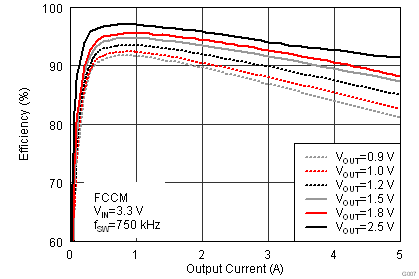 Figure 13. Efficiency vs Output Current, FCCM
Figure 13. Efficiency vs Output Current, FCCM
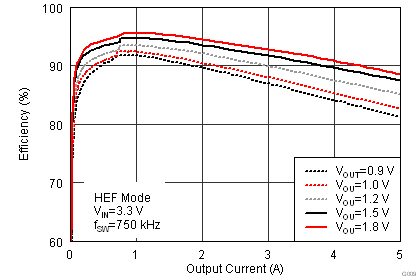 Figure 15. Efficiency vs Output Current, HEF Mode
Figure 15. Efficiency vs Output Current, HEF Mode
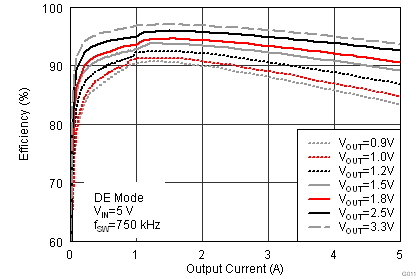 Figure 17. Efficiency vs Output Current, DE Mode
Figure 17. Efficiency vs Output Current, DE Mode
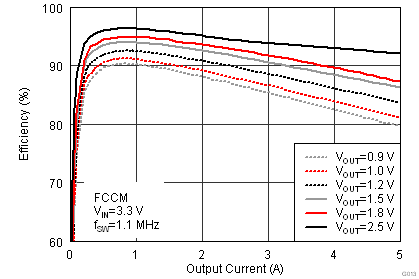 Figure 19. Efficiency vs Output Current, FCCM
Figure 19. Efficiency vs Output Current, FCCM
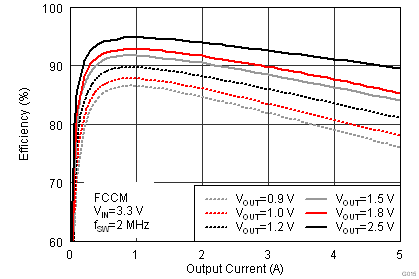 Figure 21. Efficiency vs Output Current, FCCM
Figure 21. Efficiency vs Output Current, FCCM
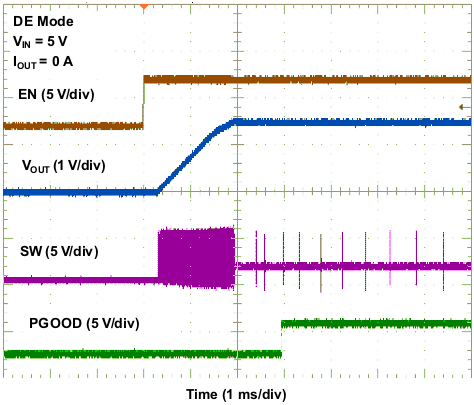 Figure 23. Normal Start-up
Figure 23. Normal Start-up
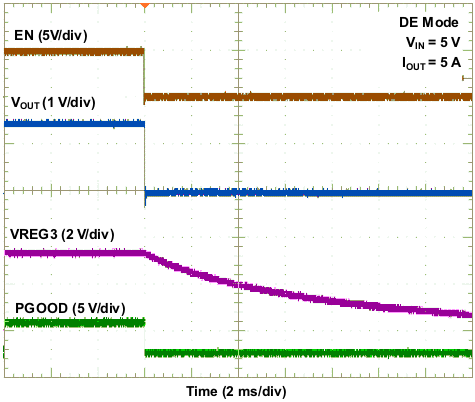 Figure 25. Turnoff Enable
Figure 25. Turnoff Enable
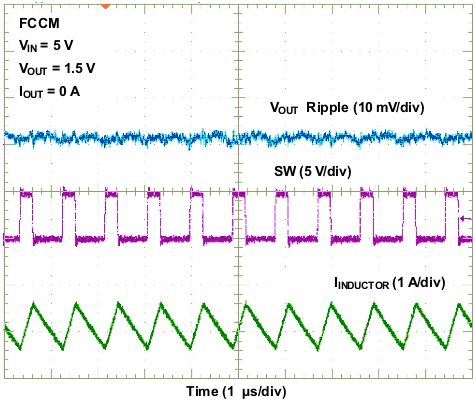 Figure 27. Output Voltage Ripple – FCCM
Figure 27. Output Voltage Ripple – FCCM
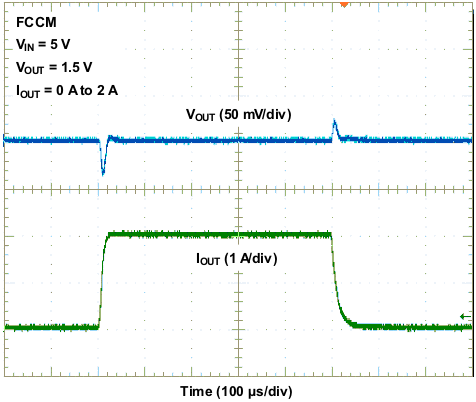 Figure 29. Load Transient – FCCM
Figure 29. Load Transient – FCCM
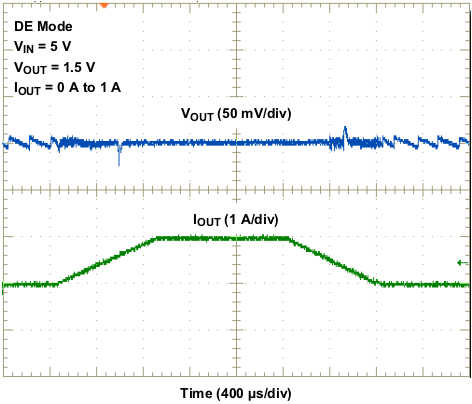 Figure 31. DE Mode DCM and CCM Transition
Figure 31. DE Mode DCM and CCM Transition
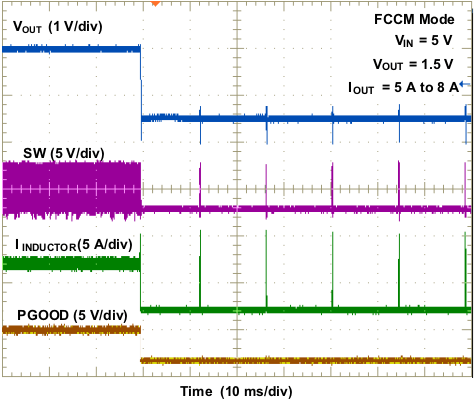 Figure 33. Overcurrent Protection
Figure 33. Overcurrent Protection
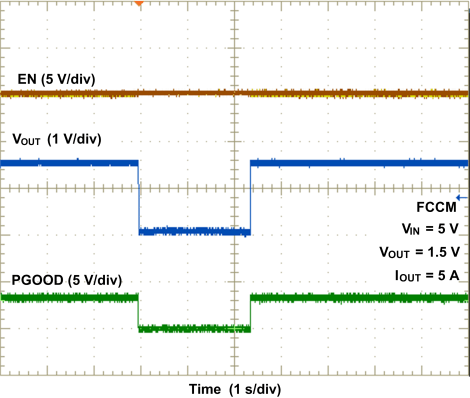 Figure 35. Overtemperature Protection
Figure 35. Overtemperature Protection
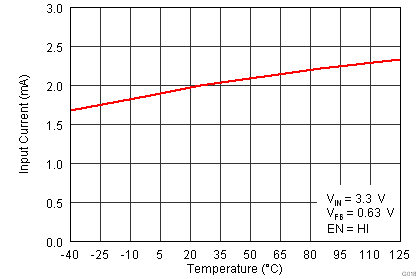 Figure 2. Input Current vs Temperature
Figure 2. Input Current vs Temperature
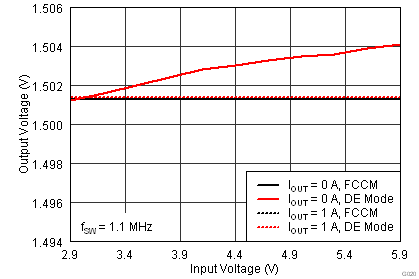 Figure 4. Output Voltage vs Input Voltage
Figure 4. Output Voltage vs Input Voltage
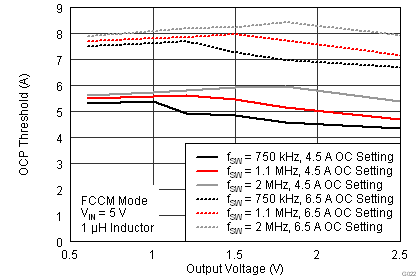 Figure 6. OCP Threshold vs Output Voltage
Figure 6. OCP Threshold vs Output Voltage
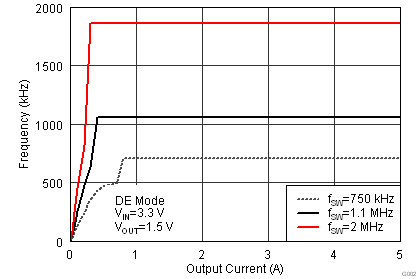 Figure 8. Frequency vs Output Current, DE Mode
Figure 8. Frequency vs Output Current, DE Mode
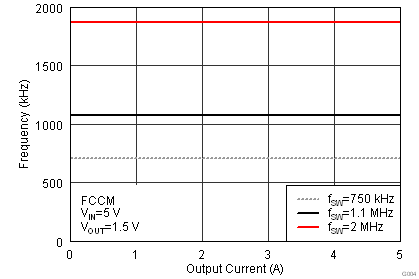 Figure 10. Frequency vs Output Current, FCCM
Figure 10. Frequency vs Output Current, FCCM
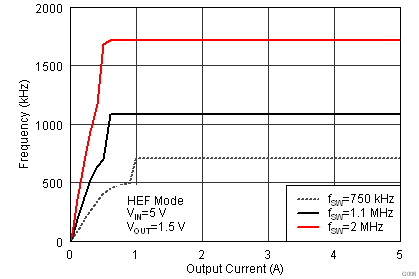 Figure 12. Frequency vs Output Current, HEF Mode
Figure 12. Frequency vs Output Current, HEF Mode
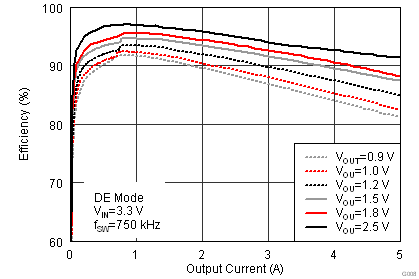 Figure 14. Efficiency vs Output Current, DE Mode
Figure 14. Efficiency vs Output Current, DE Mode
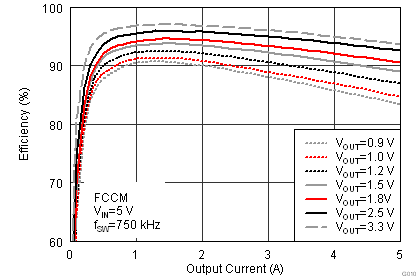 Figure 16. Efficiency vs Output Current, FCCM
Figure 16. Efficiency vs Output Current, FCCM
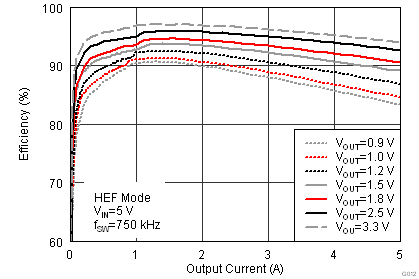 Figure 18. Efficiency vs Output Current, HEF Mode
Figure 18. Efficiency vs Output Current, HEF Mode
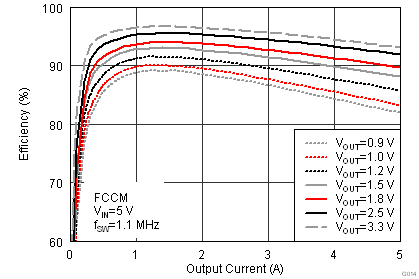 Figure 20. Efficiency vs Output Current, FCCM
Figure 20. Efficiency vs Output Current, FCCM
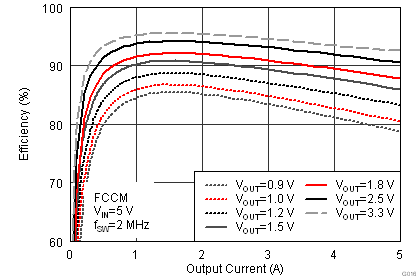 Figure 22. Efficiency vs Output Current, FCCM
Figure 22. Efficiency vs Output Current, FCCM
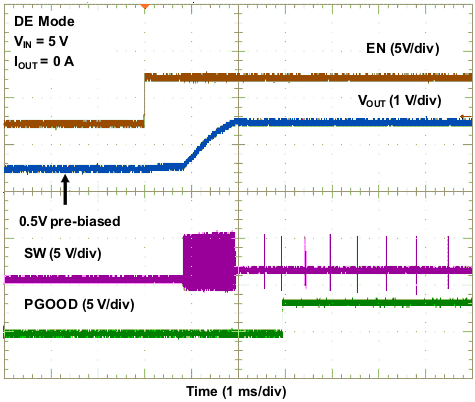 Figure 24. Prebiased Start-up
Figure 24. Prebiased Start-up
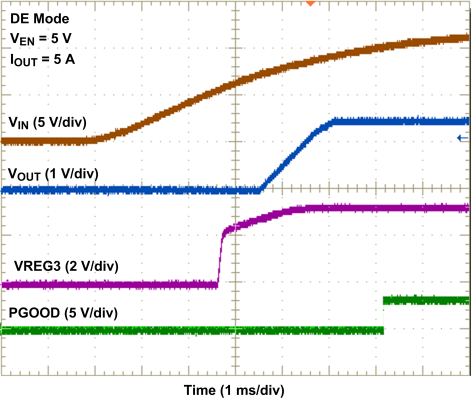 Figure 26. UVLO Start-Up Waveform
Figure 26. UVLO Start-Up Waveform
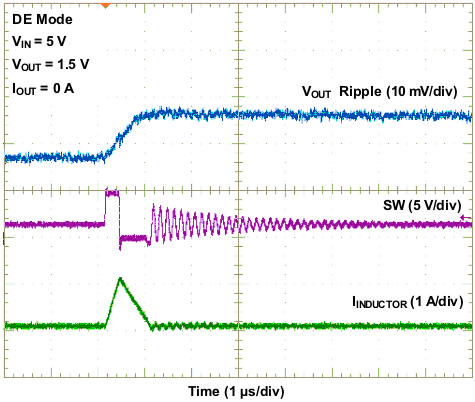 Figure 28. Output Voltage Ripple – DE Mode
Figure 28. Output Voltage Ripple – DE Mode
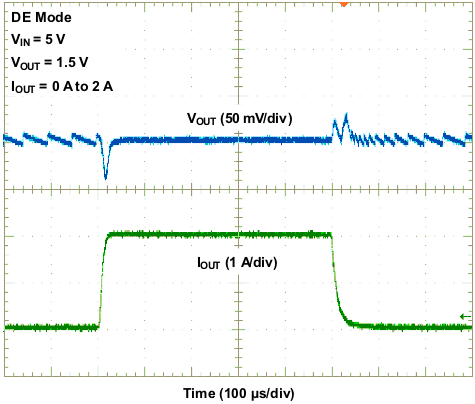 Figure 30. Load Transient – DE Mode
Figure 30. Load Transient – DE Mode
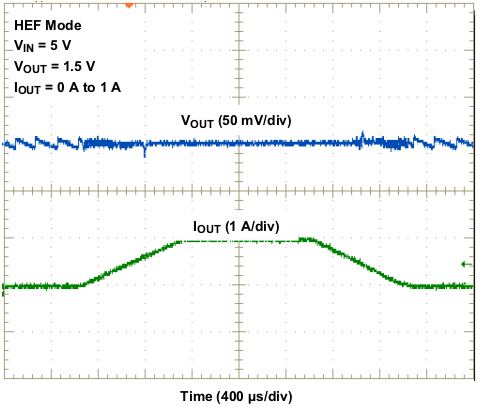 Figure 32. HEF Mode DCM and CCM Transition
Figure 32. HEF Mode DCM and CCM Transition
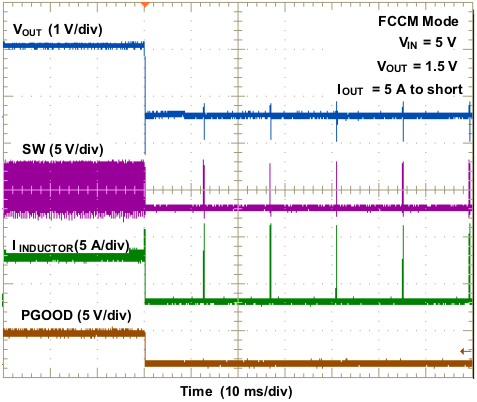 Figure 34. Short-Circuit Protection
Figure 34. Short-Circuit Protection
